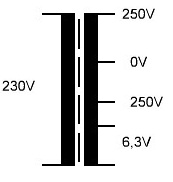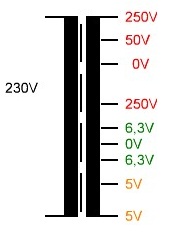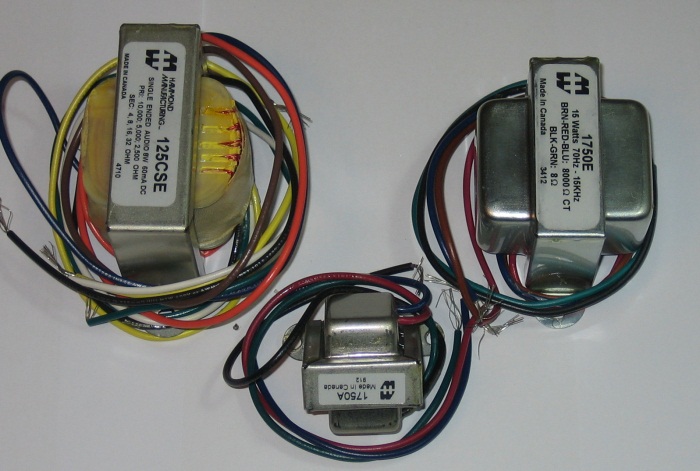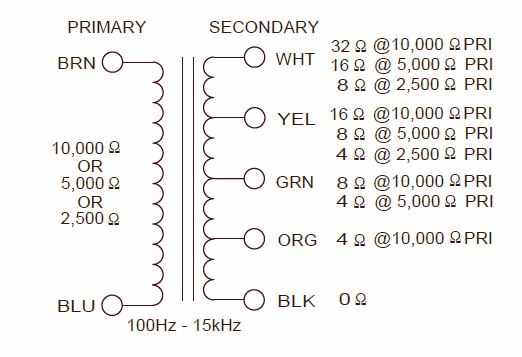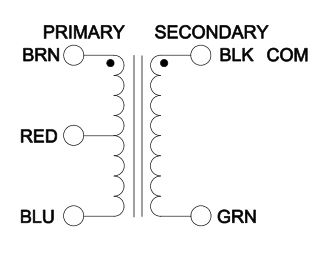Transformers
A tube amplifier has multiple transformers. Absolutely necessary are power transformer and output transformer. Cheap transformers, sometimes sold expensive, are a constant source of sorrows. Especially as DIY beginner I would take brands. I have had many defective transformers, all cheap chinese crap (Weber, TAD, Blackstar, Marshall ...). Any special transformers or the expensive Mercury are technically not justified, just for restorations or if you have too much money.
Power transformers
Power transformers are often abbreviated PT (Power Transformer). The picture shows a transformer by Welter with mounting bracket, toroidal transformers by Tubetown and an encapsulated transformer by Hammond. The power transformers provide the necessary voltages. I like the ring cores! Light, strong and little trouble with hum. For Fender types I take the Hammond, as there were never any problems.
This is the easiest and most up-to-date transformer. You need a bridge rectifier (silicon). This version is not less good as the (outdated) versions with center tap. This was formerly needed because the diode tubes meant much effort and loss, so you had to make it with two diodes.
The transformer again with center tap. Here you can rectify with two diodes. But with this transformer, the use of only one rectifier tube is allowed (and of course, silicon diodes) with 6.3V heating (e.g .: EZ81).
Now the whole nine yards. The high voltage (abbreviated HV or HT) with a center tap. Because of the 5V heating coil, you can use any rectifier tube (also silicon). The -50V tap is needed for many "fixed bias" circuits (but can also be replaced by a small circuit). The colors correspond to the standard cable colors.
Output transformers
Output transformers are abbreviated OT (Output Transformer). On the left in the picture an 8W SE transformer, on the right a 15W PP transformer. We can already see that SE and lightweight do not go together. The little in the middle is also a starting transformer, 3.5W for a reverb spring. An output transformer converts the high voltage in the tube to a lower voltage (but larger current) for the speaker.
There are also transformers for the 100V PA systems (in schools or churches), but these are constructed differently and not important here. They can be recognized, because the taps are marked with wattages.
Here is the specification from the Hammond PDF for the 125CSE. You can use this SE transformer pretty universal. If we have a 6V6 and the anode voltage is within the normal range up to about 300V, so we assume that we have 5k primary (even if it is mathematically a little more), which means cables sw and yellow for a 8 Ohm speaker.
Here is the specification from the Hammond PDF for the 1750E, the transformer for 15W PP for harp, the version with just one tap secondary. 2x6V6 to an 8 ohm speaker.
Choke
Chokes are used in the power supply. They are located between the first and second e-cap instead of a resistor. Coils have a large AC resistance at a low DC resistance and filter the hum. Especially in amplifiers with spring reverb a must.


